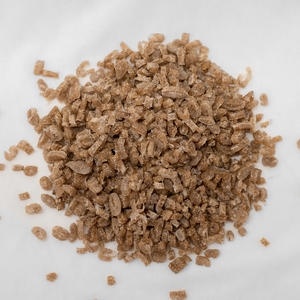Biopolymers Market: Emerging Trends and Opportunities in Green ChemistryPosted by Pearl Smith on July 7th, 2023  The biopolymers market refers to the market for polymers that are derived from renewable sources such as plants, animals, and microorganisms. Biopolymers are gaining significant attention due to their eco-friendly nature, renewable origin, and potential to replace traditional petroleum-based polymers. These polymers have a wide range of applications in various industries, including packaging, automotive, agriculture, textiles, electronics, and healthcare. Types of Biopolymers: Polylactic Acid (PLA): PLA is one of the most widely used biopolymers. It is derived from renewable resources such as corn starch or sugarcane. PLA has excellent biodegradability and is commonly used in packaging materials, disposable cutlery, textiles, and 3D printing. Polyhydroxyalkanoates (PHA): PHA is a family of biopolymers produced by microorganisms through fermentation of renewable feedstocks. It is biodegradable and has applications in packaging, biomedical materials, and agriculture. Starch Blends: Starch-based biopolymers are made by blending starch with other biodegradable polymers such as polylactic acid (PLA) or polybutylene adipate terephthalate (PBAT). They are used in packaging, disposable cutlery, and agricultural films. Polybutylene Adipate Terephthalate (PBAT): PBAT is a biodegradable polyester that is commonly used in flexible packaging, compost bags, and mulch films. Polyethylene Furanoate (PEF): PEF is a biopolymer that is produced from plant-based sources such as sugar cane or corn. It has excellent barrier properties and can be used as a substitute for traditional PET (polyethylene terephthalate) in beverage bottles and packaging. Others: Other biopolymers include polyhydroxybutyrate (PHB), cellulose-based polymers, and chitosan, among others. Market Drivers: Environmental Concerns: Growing environmental awareness and the need to reduce reliance on fossil fuels are driving the demand for biopolymers. Biopolymers offer a sustainable alternative to conventional polymers, as they are derived from renewable resources and have lower carbon footprints. Government Regulations and Policies: Governments worldwide are implementing regulations and policies to promote the use of biopolymers and reduce plastic waste. Bans on single-use plastics and incentives for biopolymer adoption are driving market growth. Consumer Preference: Increasing consumer preference for eco-friendly products is creating a demand for biopolymer-based packaging, disposable items, and textiles. Technological Advancements: Ongoing research and development efforts are focused on improving the performance characteristics of biopolymers, such as strength, durability, and heat resistance, to expand their applications across various industries. Market Challenges: Cost: Biopolymers are currently more expensive to produce than traditional petroleum-based polymers. The high production cost poses a challenge to widespread adoption, although economies of scale and technological advancements are expected to bring costs down over time. Performance Limitations: Some biopolymers have performance limitations in terms of mechanical strength, barrier properties, and temperature stability compared to conventional polymers. Continued research and development are required to overcome these limitations. Infrastructure and Recycling: Biopolymers require specific infrastructure and composting facilities for efficient waste management. The lack of widespread infrastructure for biopolymer recycling and composting can hinder market growth. Market Outlook: The biopolymers market is experiencing significant growth and is expected to continue expanding in the coming years. According to market reports, the global biopolymers market was valued at around USD 10.5 billion in 2020 and is projected to reach USD 29.7 billion by 2026, growing at a CAGR of approximately 18%. Europe and North America are currently the leading markets for biopolymers, driven by stringent regulations and high consumer awareness. However, the Asia-Pacific region is expected to witness substantial growth due to increasing industrialization, rising environmental concerns, and government initiatives to promote sustainable practices. Key market players in the biopolymers industry include NatureWorks LLC, Braskem, BASF SE, Novamont S.p.A., Corbion, Danimer Scientific, and Total Corbion PLA, among others. These companies are investing in research and development, strategic partnerships, and capacity expansions to meet the growing demand for biopolymers and gain a competitive edge in the market. Overall, the biopolymers market is poised for significant growth as industries and consumers increasingly embrace sustainable alternatives to traditional polymers. With advancements in technology and increasing focus on circular economy practices, biopolymers are likely to play a crucial role in reducing plastic waste and promoting a more sustainable future. Like it? Share it!More by this author
|


